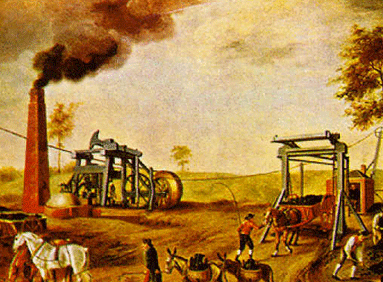
天津

代码:TS000170
欢迎来到环球教育官方网站,来环球教育雅思培训,去全球,名师高徒,高分留学!
来源:环球教育
小编:长安 316 为帮助大家积累一些雅思写作素材,环球教育天津学校李根老师今天给大家介绍一下工业革命和期间的重大发明:

The Industrial Revolution was the transition to new manufacturing processes in the period from about 1760 to sometime between 1820 and 1840. This transition included going from hand production methods to machines, new chemical manufacturing and iron production processes, improved efficiency of water power, the increasing use of steam power, the development of machine tools and the rise of the factory system.
工业革命(英语:Industrial Revolution),又称产业革命,更准确的说是第一次工业革命,一个起点约于1760年代,一直持续到1830年代至1840年代的历史时期。在这段时间里,人类生产逐渐转向新的制造过程,出现了以机器取代人力、兽力的趋势,以大规模的工厂生产取代个体工场手工生产的一场生产与科技革命。
由于机器的发明及运用成为了这个时代的标志,因此历史学家称这个时代为机器时代(the Age of Machines)。马克思主义史家将它视为资本主义工业化的早期历程,即资本主义生产完成了从工坊手工业向机器工业过渡的阶段。
Textiles - mechanised cotton spinning powered by steam or water increased the output of a worker by a factor of around 500. The power loom increased the output of a worker by a factor of over 40. The cotton gin increased productivity of removing seed from cotton by a factor of 50. Large gains in productivity also occurred in spinning and weaving of wool and linen, but they were not as great as in cotton.
纺织业 - 由蒸汽或水驱动的机械化纺纱大大增加了工人的产量。织机将工人的产量提高了40%。棉花辘轳使去除棉花中种子的效率提高了50%。羊毛和亚麻的纺织和编织也产生了生产率的大幅提高,但它们没有棉花那么显著。
Steam power - the efficiency of steam engines increased so that they used between one-fifth and one-tenth as much fuel. The adaptation of stationary steam engines to rotary motion made them suitable for industrial uses. The high pressure engine had a high power to weight ratio, making it suitable for transportation. Steam power underwent a rapid expansion after 1800.
蒸汽动力 - 蒸汽机的效率提高,使他们只需原先五分之一至十分之一的燃料 。固定蒸汽发动机对旋转运动的适应使它们适合于工业用途。[4]高压发动机具有高的功率重量比,使其适合运输。[5] 1800年后,蒸汽动力迅速普及。蒸汽机改变了以往的生产只能依赖人力和畜力的局限,为工业生产、交通运输提供了廉价而充足的动力。
Iron making - the substitution of coke for charcoal greatly lowered the fuel cost for pig iron and wrought iron production. Using coke also allowed larger blast furnaces, resulting in economies of scale. The cast iron blowing cylinder was first used in 1760. It was later improved by making it double acting, which allowed higher furnace temperatures. The puddling process produced a structural grade iron at a lower cost than the finery forge. The rolling mill was fifteen times faster than hammering wrought iron. Hot blast (1828) greatly increased fuel efficiency in iron production in the following decades.
钢铁生产 - 用焦炭代替木炭大大降低了生铁和锻铁生产的燃料成本,也增大了钢铁的韧性和强度。使用焦炭还增大了高炉的最大大小,扩大了经济规模。铸铁吹塑气缸首先在1760年使用。其后通过使其双重作用得到改进,这使更高的炉温变为可能。
钢铁业的进步,为技术革新生产的各种新机器提供了必要的原材料,同时也将英国大量的煤炭资源利用了起来。工业革命首先发生在英国中北部,和英国中北部拥有大量的煤炭和铁资源是分不开的。